One of my very early notes was made after Chepstow Castle. However, the same thought fits all of the abbeys and castles. To me, reading about each site as we explored them – even places with barely a hole for a window or doorway yet alone a wall – had one major difference. At times palpable, others just sad reminders. Abbeys were built to impress God, and perhaps as an afterthought the brethren; whereas castles were built to oppress, and therefore impress upon, the people. Of course the latter were also built as protective forts – from whom might remain up to discussion.
On the day we visited Raglan Castle, plus the Llanthony Priory neither had been on my list for that day. However, after discussing our plans with our host she suggested we switch our order of exploring which would give us time to drive to Hay-on-Wye. One place I was quite looking forward to that did not include castles.


The Welsh ‘blue knight of Gwent’, (Sir Willam ap Thomas) built the tower in 1435.
His son, Sir William Herbert, would continue to build a castle fit for a king. (Confused yet?) Henry Tudor, the future King Henry VII, was sent to Sir William to be brought up at Raglan Castle.

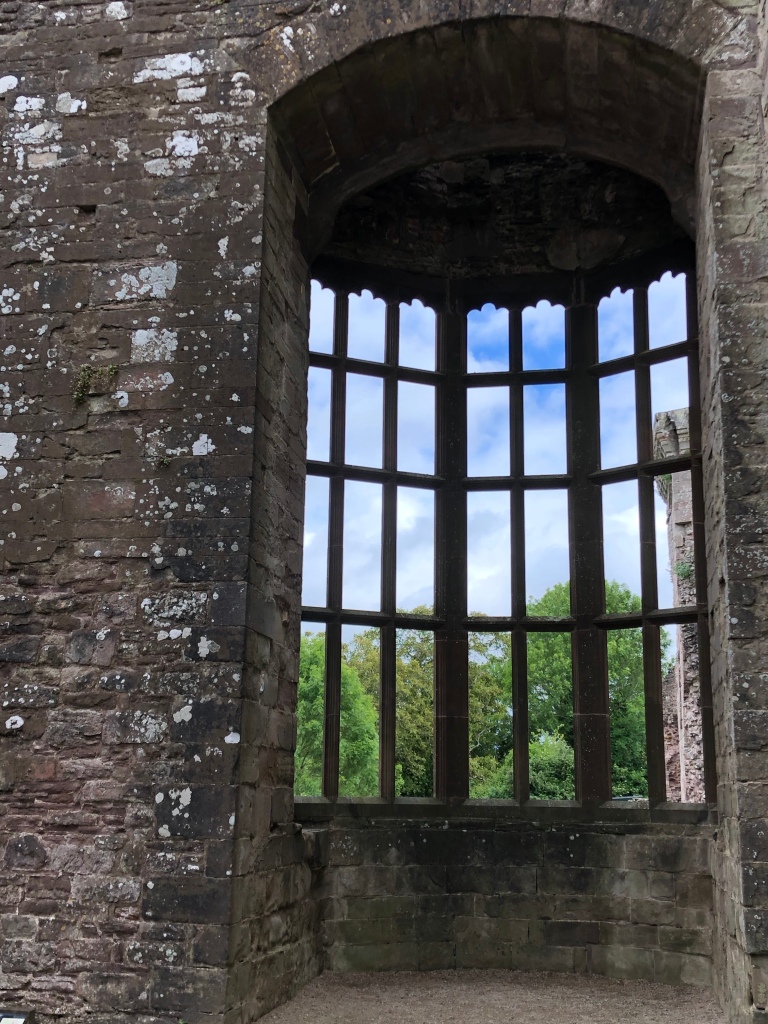
Nothing more was done to build the castle until William Somerset, Earl of Worcester (1548-89) made even grander additions and changes to the Hall and apartments. This window had heraldic stained glass in it. Imagine cleaning all that glass!



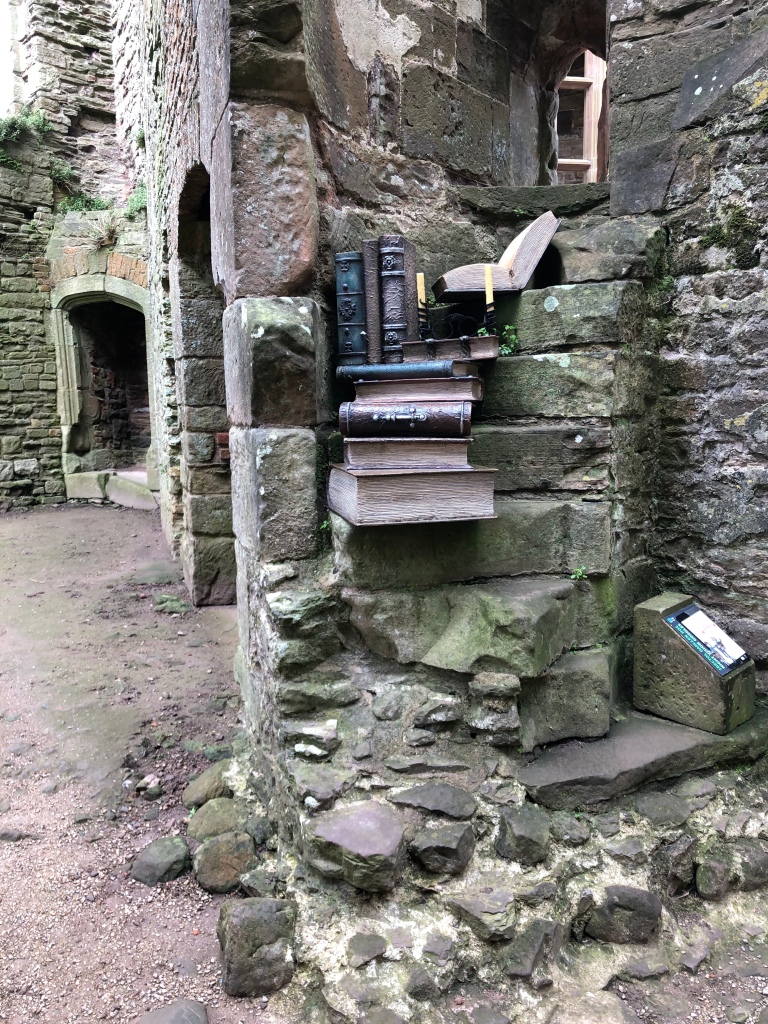
After a farewell and turning away Raglan faded back into the past. However, we were not quite prepared to completely enter the present beyond some intense focus on the roads we had to traverse. We had two goals. Llanthony Priory and Hay-onWye, all before dinner. The Abbey was, according to our SatNav, only 30 minutes away and Hay-on-Wye a mere 40 minutes beyond that. Perhaps SatNav had not considered the horse and carriage roadways.
We nearly missed the turn to Llanthony Priory. However, once we realized that the Brecon Beacons National Park was indeed where we wanted to be, with nearby washrooms (ask for the toilets though), we discovered the priory on the edge of the park. Although now privately owned, and therefore why we could not find it, thinking it was the Llanthony Priory Hotel, it is considered a historical site and is open to visitors.

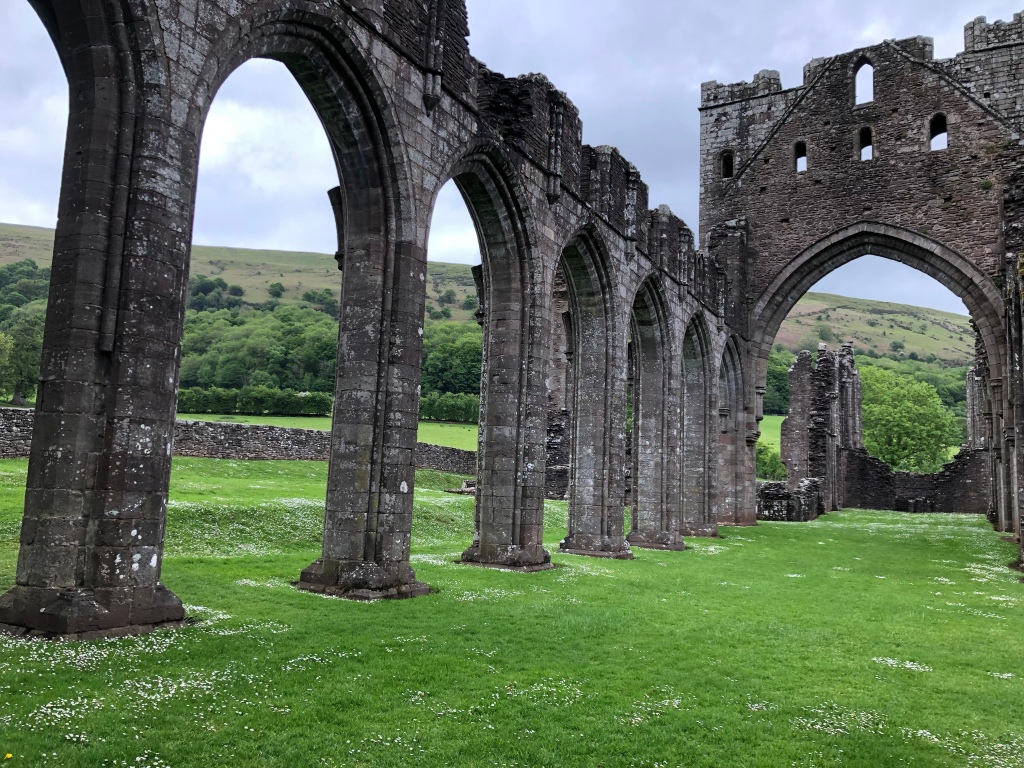
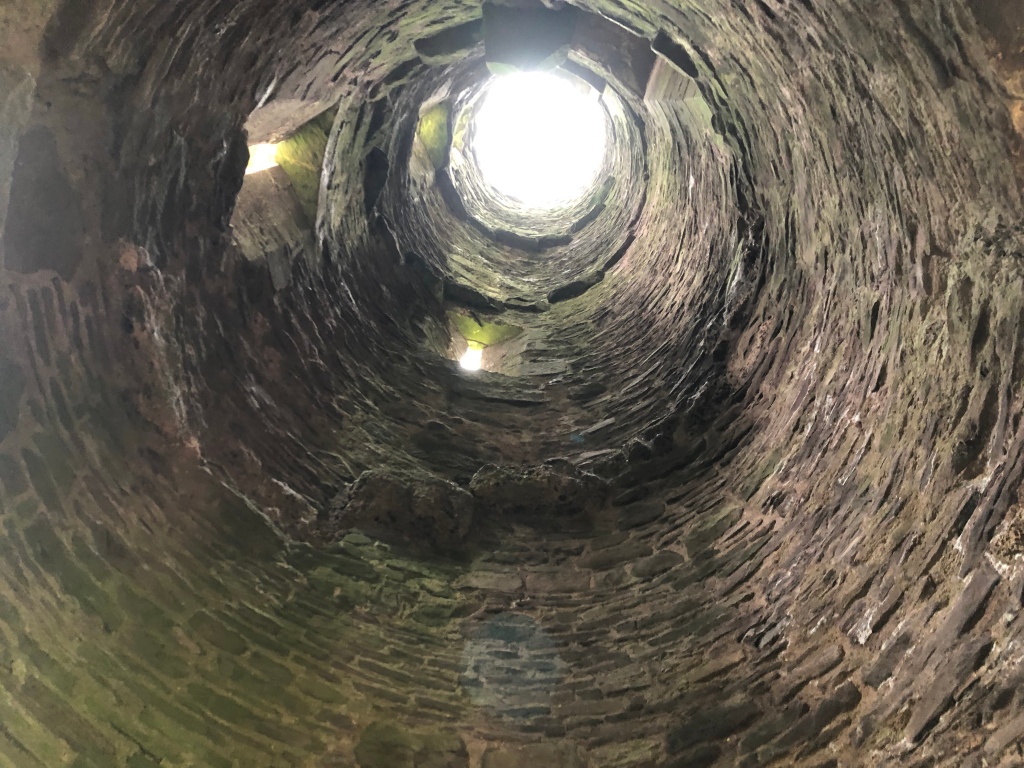
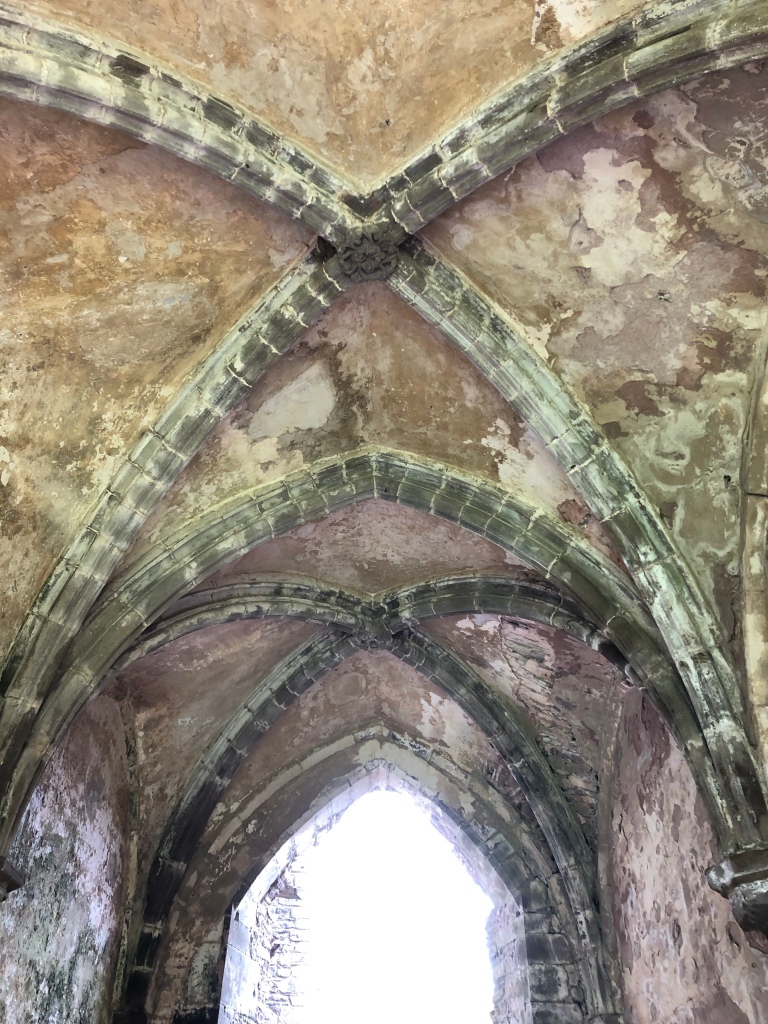

Although I do not like the idea of a hotel attached to the corner of the site it appears the owners are maintaining the priory and area as historic treasures. There is a small bar that cleverly appears to be part of the Old Priory. We never did make it Hay-on-Wye having been turned around at a sign that claimed the narrow back road was closed due to a ‘landslip’. Rather than take our chances we turned around and headed back, this time to discover the bar is aptly named Cellar-Bar, where we were told the sign had been there for ages and we could have made the trip. I guess the lesson here is to ask before setting out. We had coffees, my daughter managed to get some more charge on her phone, for a charge, then we headed off. Back to Tintern for our last night and a fabulous meal at Parva Farm. (UK Bound: Wales – the Food)
